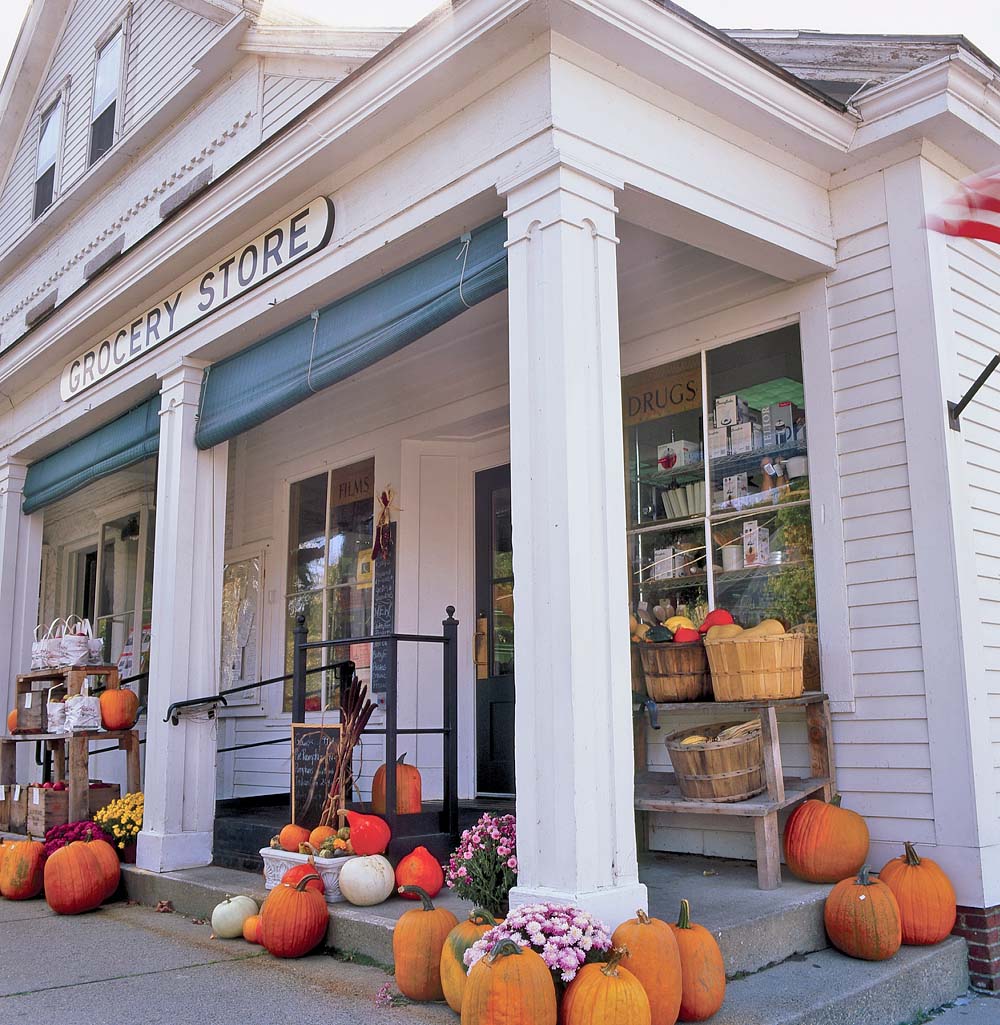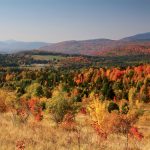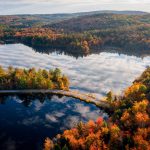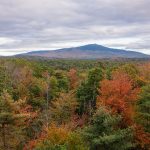Monadnock Region: New Hampshire
The secret to savoring New Hampshire’s Monadnock region is to drive slowly and stop often.

Coffee By Design | Portland, Maine
Photo Credit : Katherine KeenanOriginally published as “Our Own Magic Mountain,” September/October 2008.
For those of us who live here in the southwestern pocket of New Hampshire, we know we’re home when we see our mountain, our Monadnock, on the horizon. It rises only 3,165 feet, modest enough compared with many in the Whites, or Katahdin in Maine. But geology has emboldened Monadnock. It stands alone, with no other prominence to distract us — an only child who receives undivided love. Nowhere else in New England does a single mountain give such a powerful sense of geographical identity. When I travel outside the state and people ask me where I’m from, I simply say, “The Monadnock region,” the way I imagine someone might say, “Tuscany.”
“The mountain that stands alone,” however, is rarely, if ever, alone. Each year some 125,000 hikers head up its worn trails, climbing above the tree line in less than an hour — and suddenly the land stretches below in an unbroken vista of woods and ponds and lakes. The hikers climb higher, across the cairn-strewn, bouldery paths that bring them to the summit, where folks mingle and sit picnicking beside their day packs. I’ve been there during autumn weekends when the summit has been as populated as a summer beach. Local lore says that Monadnock is the second-most-climbed mountain in the world, surpassed only by Fuji in Japan. Climbers come, in part, because Boston is only 65 miles away. And they come for the views — which on clear days take you to all six New England states in one single, circling gulp. Thoreau came. So did Emerson, and Mark Twain, and heavyweight champion John L. Sullivan. Mountain historians reckon that since the 19th century, five million people have walked Monadnock’s trails.
While visitors strain for the glint of sunlight off the windows of Boston’s Prudential Center to the southeast, or the elusive shape of Mount Washington to the north, we who live here look closer: to a village, a church, a cleared swath of farmland, the lake where we swim, the house where we live. This Monadnock region isn’t made for distant viewing anyway.
Forty towns and villages — including one small city of 22,000 — claim kinship with Monadnock, and within them there are more streams, lakes, ponds, waterfalls, and tree-lined back roads connecting with other tree-lined back roads than you can see in months of touring around. I’ve lived here 30 years, and I still come upon hidden beauty and curiosities I never knew.
For me, the most striking views of Monadnock are from Jaffrey and Dublin, the two towns that share the mountain’s craggy slopes. But neither is my favorite. That accolade belongs to the view as I approach Peterborough from the east, on my way back from Manchester or Boston, where just before town, the road dips, and suddenly the mountain is all I see — dark and wide, calling as insistently as a lighthouse beacon calls sailors home.
For two centuries, writers, artists, and craftspeople have responded, establishing colonies near the mountain. Even today, as you drive around the area, you’ll find painters setting up their easels in villages like Harrisville and Hancock. Willa Cather, the novelist who brought the westward migration to life with wondrous tales, including My Antonia and O Pioneers!, visited the Monadnock region for years, writing within sight of the mountain. When she died, she was interred in a corner of the Jaffrey Center graveyard, the Old Burying Ground behind the Meetinghouse. If you come here, do what we do: Take your time, drive slowly, stop often. Chances are you’ll find, like Willa Cather, the secret of Monadnock’s hold on us. Why would anyone want to leave?








Dear Editor,
I was moved to tears remembering Mt.Monadnock described in Mel Allen’s “Our Own Magic Mountain”(Sept/Oct 08). We had the pleasure of “her” company while residing in Nashua,NH. We returned to Texas in 2001, but have fond memories of the magic she provides. As a Medical Rep., Southern NH & Brattleboro/Putney Vt. was my territory. I had many out-of-body moments viewing, as I called her, My Girl as I rounded the bend at Rt.102 & 202, she would rise up to greet me! The view is awesome going around the Dublin Pond as well. My husband climbed Mt. Monadnock three times. We visited many of the places mentioned — Harrisville, Dublin General Store when Pam & John (our namesakes)were owners, Frye’s Measure Mill, Jaffrey’s(Kimball Ice Cream), etc. We almost purchased the “Joseph Eaves Farmhouse” (1885) on Old Chesham Road. More importantly, we met the most delightful lady at the Yankee Magazine Store — Linda Culkay, with whom we’re still in touch. It was the Yankee Magazine that enticed us to move to NH and it will entice us to move from Keene, Texas, to Keene, NH, in the near future permanently. Thanks for the memories…
Teafully,
John & Pam “The Texas TeaQueen” Aaron
of “Let’s Talk Tea”c.1995
Keene,Texas
Fantastic description. Hope to head there in 2 weeks.
I found good information here on http://www.tripcart.com/usa-regions/New-Hampshire-Vermont,Fall-Foliage.aspx – in the Monadnock region check out the covered bridges as well.
I spent my summers in Peterborough during WWII, (1943-45) working on my uncle’s farm. He lived on Old Dublin Rd., and my bedroom window gave me a beautiful view of Mt Monadnock. I was just a youngster at the time but I still remember the region as being the prettiest spot in this country. I say this after having been in every state except Alaska in the ensuing years. it was about a 20 minute walk to the village and I remember doing it every night after a day’s work gathering hay. I revisited Peterborough about ten years ago and couldn’t find a place to park! What a difference when I did not very often see a car on my way down or back. I live in North Carolina now and I surely miss New England especially this time of year.
Jim Haslam, Cary NC
I really enjoyed Mel Allen’s story about the Mt Monadnock region. The article was very well written and the pictures were great. Living in Florida means that we don’t see the leaves changing the way they do up North. Seeing these pictures reminds my wife and I of Maryland in the fall where we lived until relocating to Florida 12 years ago. Thanks again for the wonderful story and pictures.
Ronald Donett, Tampa FL
I climbed Monadnock as a child with my mother. It’s a beautiful mountain in a beautiful setting. We must all be vigilant to protect such natural wonders from industrial development. The mountain that has welcomed me home for over twenty five years in Maine’s western mountains is about to be transfigured by Maine Drilling and Blasting on behalf of Patriot Renewables, a wind developer out of Boston Mass. Don’t let this happen to your beautiful mountains. Fight for them. They are not only beautiful, but they are economic treasures as well, bringing millions in tourist dollars every year.